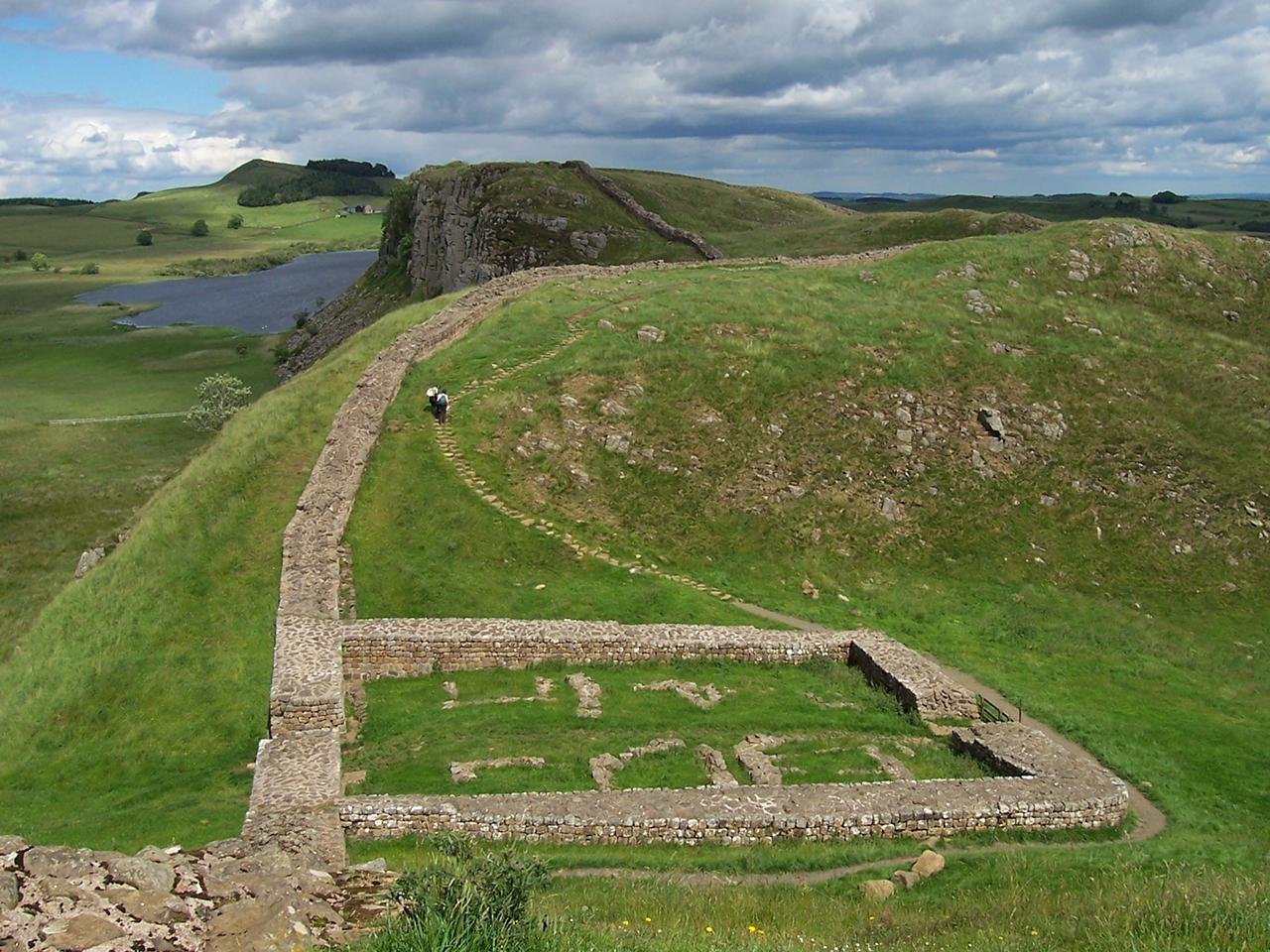A newly published study by researchers from the University of Cambridge reveals that a catastrophic three-year drought led to a mᴀssive rebellion known as the “Barbarian Conspiracy” in Roman Britain around 367 CE. This period of severe climate hardship, combined with political and military weaknesses, paved the way for devastating invasions by the Picts, Scotti, and Saxons.
 The remains of Milecastle 39 on Hadrian’s Wall, near Steel Rigg. Credit: Adam Cuerden
The remains of Milecastle 39 on Hadrian’s Wall, near Steel Rigg. Credit: Adam Cuerden
By employing oak tree-ring records from southern Britain and northern France, researchers reconstructed the climate conditions from the fourth to sixth centuries. In their study published in Climatic Change, the researchers disclose that the summers of 364, 365, and 366 CE were unusually dry, with rain significantly less than the average needed to sustain crops like spelt wheat and barley. According to the research, the average growing season rainfall between 350 and 500 CE was 51 millimeters per month, but in these crucial years it decreased to only 28–37 millimeters.
“Three consecutive droughts would have had a devastating impact on the productivity of Roman Britain’s most important agricultural region,” said Professor Ulf Büntgen from Cambridge’s Department of Geography. “As Roman writers tell us, this resulted in food shortages, with all of the destabilizing societal effects this brings.”
These food shortages eventually resulted in famine conditions by 367 CE. Roman historian Ammianus Marcellinus, writing in his Res Gestae, described Britain’s population as being in “utmost conditions of famine” at that time. This strain impacted the Roman military, leading to desertions along Hadrian’s Wall and leaving the province vulnerable to invasion.
 The broad movements of tribes outlined by Ammianus in the winter of 367 CE. Credit: Norman et al., Climatic Change (2025)
The broad movements of tribes outlined by Ammianus in the winter of 367 CE. Credit: Norman et al., Climatic Change (2025)
The Picts of the north, the Scotti of Ireland in the west, and the Saxons landed from the European continent in the south. Roman senior commanders were captured or killed, and Roman troops even joined the invaders. Although Emperor Valentinian I managed to restore some order by 369 CE, the damage was too extensive; Roman administration would abandon Britain entirely by around 410 CE.
Lead researcher Charles Norman, a doctoral researcher at Cambridge, explained that even written records have long acknowledged the “Barbarian Conspiracy,” but there had not been much archaeological evidence to explain the reasons behind it until now. “Our findings provide an explanation for the catalyst of this major event,” Norman said in a statement.
 The Romans Conquer Britain. Public Domain
The Romans Conquer Britain. Public Domain
The researchers also warn that the link between climate and conflict during ancient times offers simple lessons for modern times. Tatiana Bebchuk of Cambridge said, “The relationship between climate and conflict is becoming increasingly clear in our own time. Extreme climate conditions lead to hunger, which can lead to societal challenges, which eventually lead to outright conflict.”
This study underscores how environmental factors can destabilize societies, even powerful ones like Rome.
More information: Norman, C., Schwinden, L., Krusic, P. et al. (2025). Droughts and conflicts during the late Roman period. Climatic Change 178, 87. doi:10.1007/s10584-025-03925-4





